What Is A Self-Healing Cutting Mat? All You Need To Know
What is a self-healing cutting mat? A self-healing mat is like a magic trick in your craft arsenal. Think of it as your work surface’s personal superhero, protecting it from scratches and grooves typically left by craft knives. These mats are coated with a material known for its self-repairing properties.
When you make a cut, the blade goes into the mat’s soft surface, but as soon as you lift it, the magic happens: the cut seems to close up on its own. It’s not actual wizardry, though—it’s just the science of self-healing polymers at play.
These mats typically consist of multiple layers of PVC that reseal after being sliced through. By using a self-healing cutting mat, you extend the life of both your work surface and the blades of your craft knives.
Not to mention, you end up with a smoother cut on the materials you’re working on. The mat takes the hit and bounces back, ready for more action, making your crafting a bit more worry-free.
Your self-healing cutting mat won’t last forever, however. Over time, with repeated use, you might start to notice some grooves that don’t smooth out as well as they used to.
That’s normal wear and tear. But until then, you can enjoy your cutting tasks knowing your desk and your tools are in good hands—or, in this case, on a good mat.
What is A Self-Healing Cutting Mat

Check Prices: Self-Healing Cutting Mat
When you’re deep into your crafting projects, a self-healing cutting mat is like your best friend that never lets you down.
It’s made of a unique composite PVC vinyl material that closes up after you cut into it. This “self-healing” feature means that your mat won’t look like a war zone after a few projects.
Construction
- Layers: The mat is typically three layers; the middle one is harder and it’s where the magic happens.
- Surface: It’s soft enough to protect your blade but resilient enough to heal after cuts.
Self Healing Explained Imagine you make a cut on the mat. The surface of the mat absorbs the blade slice and then almost magically pulls back together. This isn’t actual magic, of course – it’s due to the unique composite PVC vinyl material being very elastic. This material helps to prevent grooves, keeping your mat smooth and your cuts precise.
Proper Use
- Flat Surface: Always use your mat on a flat surface for the best results.
- Rotary Cutters and Blades: These are ideal companions for your mat; keep your tools sharp for cleaner cuts.
- Avoid Extreme Heat: Heat can mess with the self-healing properties, so no hot projects on the mat!
- Cleaning: Use a lint roller or a damp cloth to pick up bits and maintain the mat’s integrity.
Remember: Taking care of your mat is essential. If used correctly, it will serve you faithfully for countless crafts to come. Treat it as your crafting partner, and your projects will always come out clean and crisp.
Features and Benefits
Self-healing cutting mats are essential tools that make your cutting tasks more accurate and efficient. They also protect your work surfaces from damage.
Grid Lines and Measurement Markings
Your self-healing cutting mat comes with grid lines and various measurement markings that are indispensable for precision cutting. The grid typically includes:
- A numerical scale in inches or centimeters for measuring cuts
- Bias lines for making angled cuts
- Cut lines to help ensure your cuts are straight
This detailed grid system allows you to measure and align your materials quickly, saving you time and reducing errors.
Material Composition and Thickness
A key feature of a self-healing cutting mat is its multi-layered construction, which usually includes a core that “heals” after you cut on it. Here’s a breakdown:
- Material Composition: Typically made of PVC or vinyl for elasticity and self-healing properties.
- Thickness: They often come in 3 mm thickness, providing enough cushion to protect blades and prevent cuts on the table underneath.
A thicker mat not only offers better protection for your work surfaces, but it also tends to last longer since it handles repeated cuts without showing much wear.
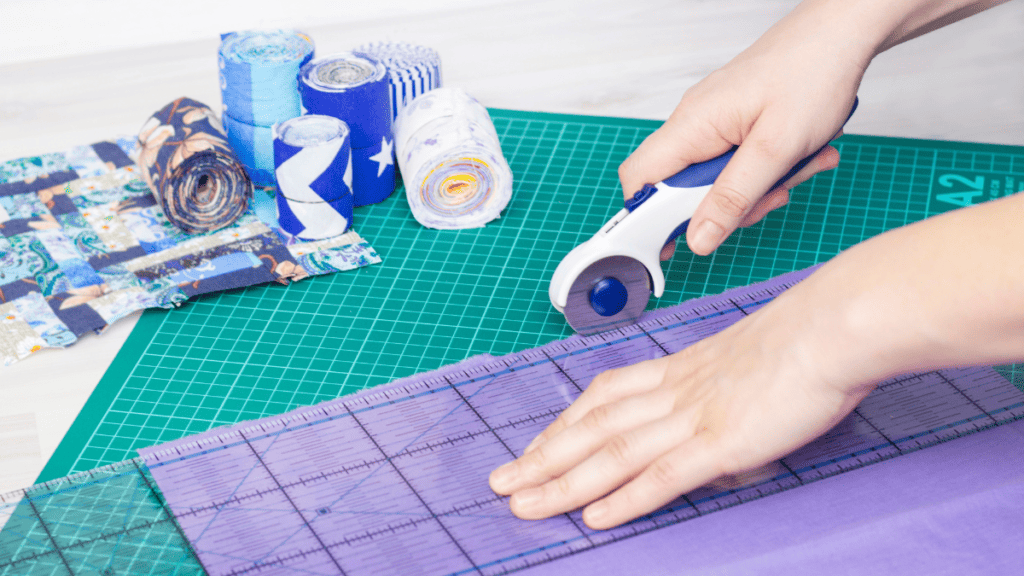
Usage and Maintenance Tips
To get the most out of your self-healing cutting mat and extend its lifespan, it’s crucial to practice proper cutting techniques, keep it clean, and store it correctly.
Cutting Techniques
- Sharp Blades: Always use sharp blades for clean cuts; dull blades can damage your mat.
- Replacement: Swap to a new blade as soon as you notice any drag or imperfections in your cuts.
- Technique: Keep your cuts straight by using a ruler, which helps preserve the mat’s surface.
Cleaning and Care
- Mild Soap Solution: Clean your mat with a mix of warm water and mild soap using a soft cloth; avoid scrubbing.
- White Vinegar for Stains: Apply a 20% white vinegar solution to tackle stubborn stains, then rinse with cool water.
- Avoid Chemicals: Steer clear of harsh chemicals that can break down the mat’s material.
Storing Your Mat
- Flat Surface: Ensure your mat is stored on a flat surface to prevent warping.
- Away from Sunlight: Keep the mat away from direct sunlight which can degrade the material.
- Temperature Control: Avoid exposing your mat to extreme temperatures as they can cause expansion or contraction.
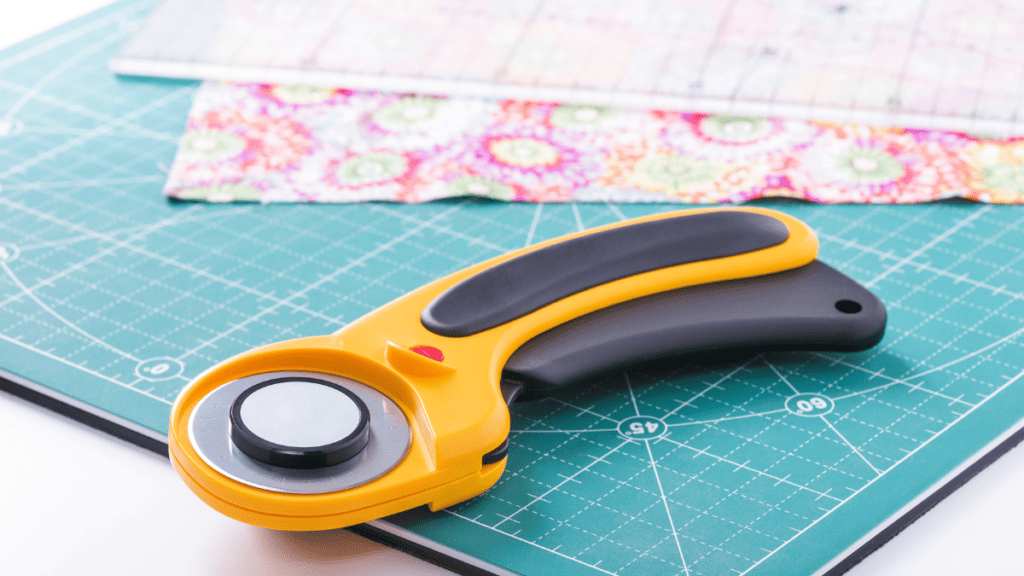
Selecting the Right Mat for Your Crafting Needs
When you’re in the market for a self-healing cutting mat, it’s crucial to consider the size and surface type that best fits your crafting projects. Let’s dive into the specifics to help you make an informed choice.
Size Considerations
Your crafting space and the scale of your projects directly impact the size of the mat you should pick.
A smaller mat might range from 5×7 inches to 12×18 inches, perfect for limited spaces or small-scale work.
On the other hand, a bigger cutting mat can go up to 36×48 inches, offering ample space for large fabrics or multiple pieces.
| Mat Sizes | Suitable For |
|---|---|
| Small | Precision cutting, limited space |
| Medium | General crafts, routine projects |
| Large | Quilting, large-scale projects, workshops |
For a custom size, some retailers provide bespoke options to fit your unique workspace or project dimensions.
Surface Type Preferences
The surface of your cutting mat should reflect the type of crafting you do. Solid surface mats have a firmer feel and are ideal for precision cuts. If you’re dealing with delicate materials or detailed work, this is your go-to.
On the other hand, soft surfaces offer more give, which can be gentler on your tools. This choice can help prolong the life of your cutting blades. If you oscillate between soft and rigid materials, you might prefer a mat with a hard surface on one side and a softer one on the other.
Remember, a self-healing cutting mat is designed to close up after being cut, keeping the surface smooth and prolonging its useful life. So, consider your projects and choose a mat that will not only protect your surfaces but also help you maintain the edge and precision of your cutting instruments.
Specialized Mats for Different Applications
When you’re tackling various projects, the right cutting mat can make all the difference. Each type of self-healing cutting mat is tailored to suit specific applications, ensuring you get the most out of your creative endeavors.
For Industrial Applications:These mats are heavy-duty and large enough to handle significant cutting jobs. They’re often found in print shops or manufacturing settings where repetitive cutting is the norm.
- Resilience: Built to withstand extensive use.
- Scale: Larger in size for bigger materials.
Sewing Machines:Mats designed for use with sewing machines usually have a non-slip surface to keep fabrics in place during the cutting process.
- Non-slip Surface: Avoids fabric movement while cutting.
- Inches and Metric Units: Provides measurements for precision.
Paper Trimmers:If you’re into scrapbooking or card-making, look for a cutting mat with guides for common paper sizes.
- Guidelines: Helps with accurate straight cuts.
- Gridlines: Ensure perfect alignment.
Sewing Projects:Your sewing projects deserve a mat that won’t dull your blades and has angle guides for those tricky cuts.
- Angle Guides: Assists in cutting fabric at various angles.
- Self-Healing Surface: Protects your blade’s sharpness.
Seminar Classes:In educational settings like a seminar class, you might use smaller, portable mats that are perfect for individual student use.
- Portability: Easy to move and store.
- Durability: Survives the wear and tear of a classroom environment.
Selecting the right mat for your application not only prolongs its life but also elevates the quality of your work. Whether it’s a detailed paper trimming task or cutting textile pieces for a quilt, there’s a mat out there that’s cut out just for your craft.
Fabric Giveaway
Enter our monthly fabric giveaway. Simply complete the tasks daily and you will be entered into the drawing. Winner will be randomly drawn on the first day of the month and notified via email
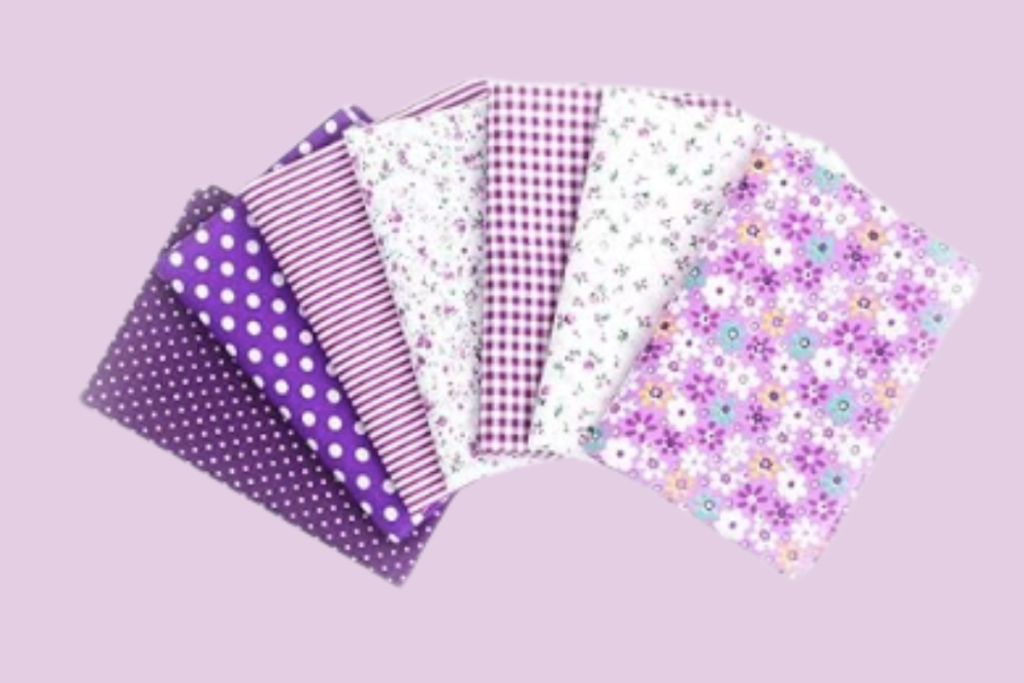

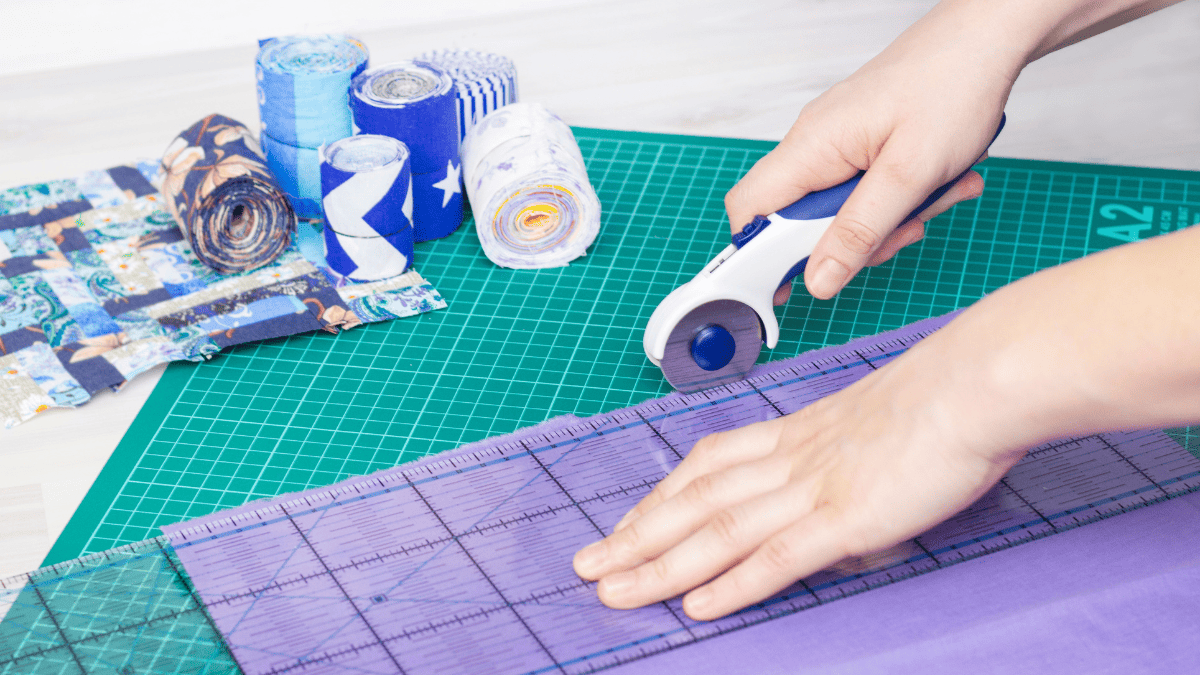
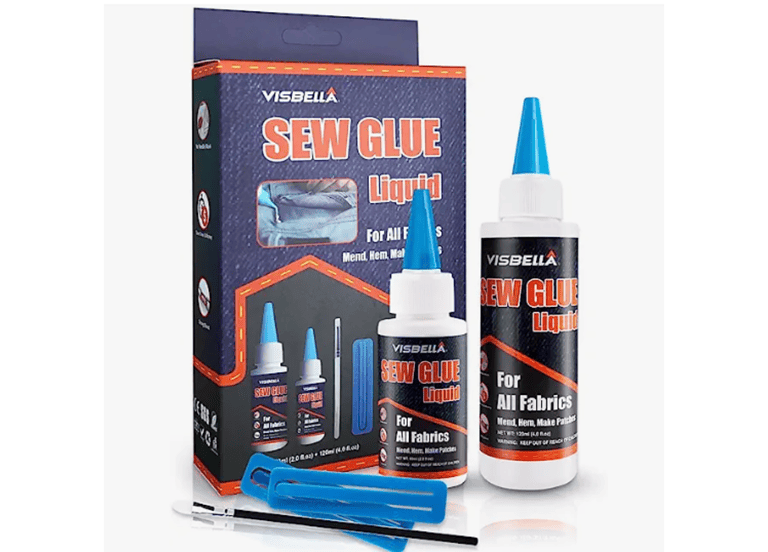
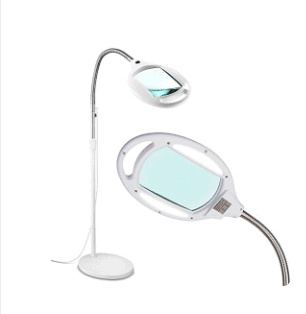
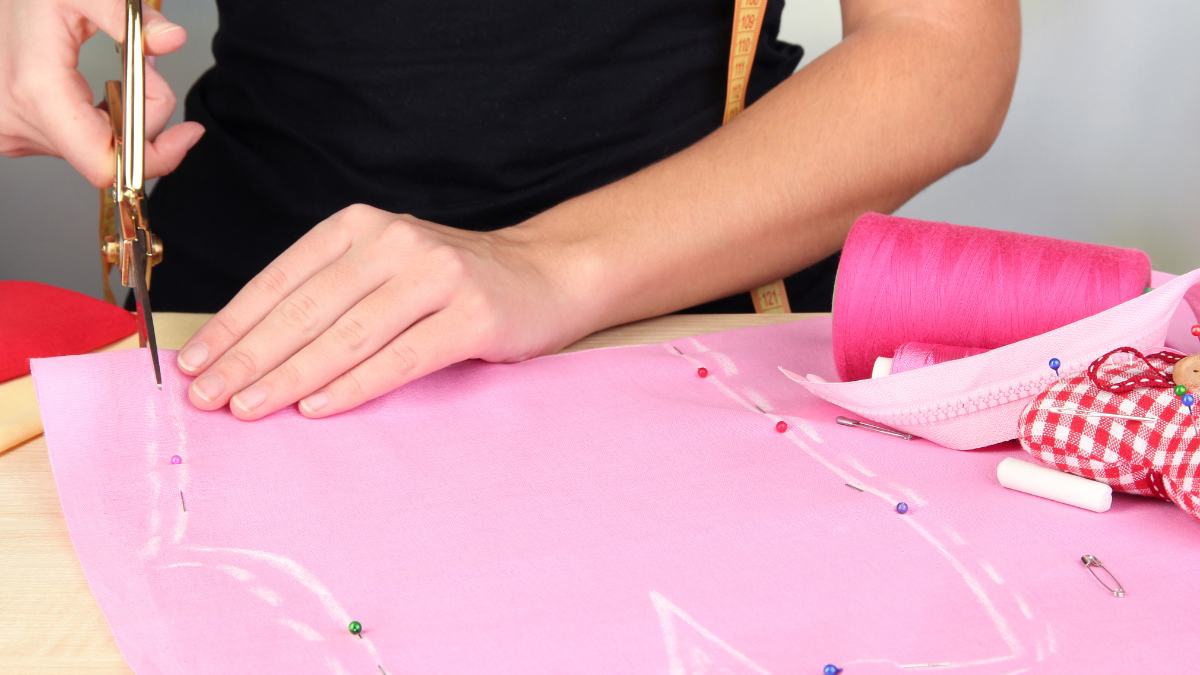
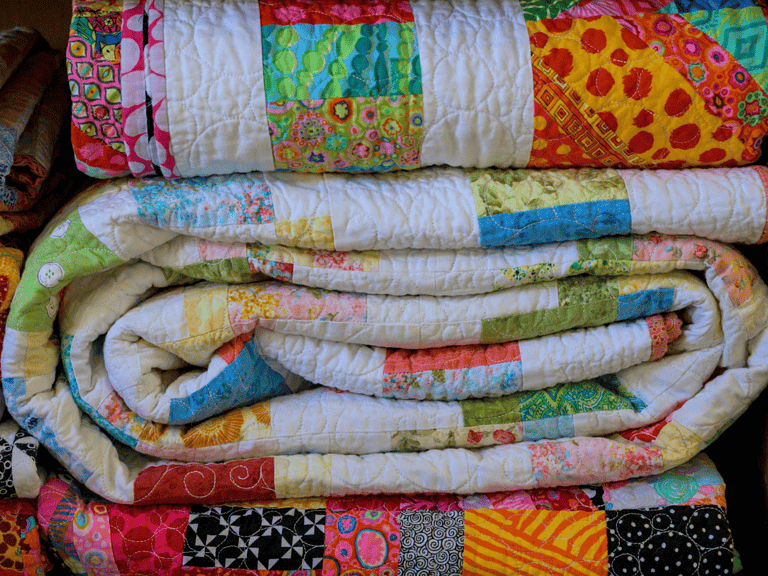
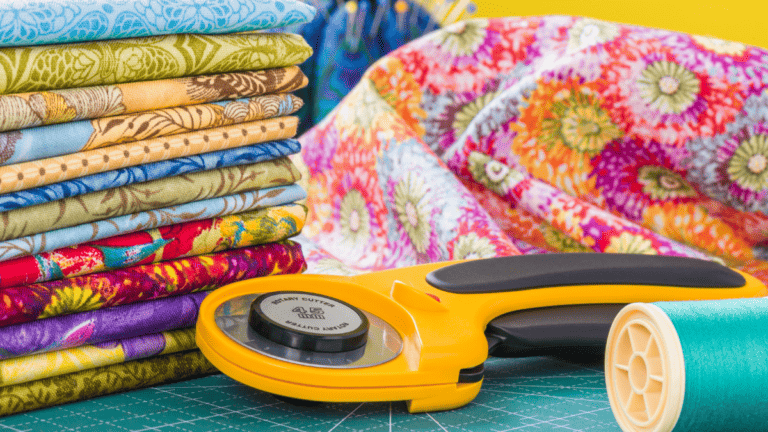

Thank you for all the useful information. I was wondering why cutting mats are only rectangular. I have trying to find one to fit my table which is 4’ square.
I got one off Amazon that is a smaller that would fit great on that size table.